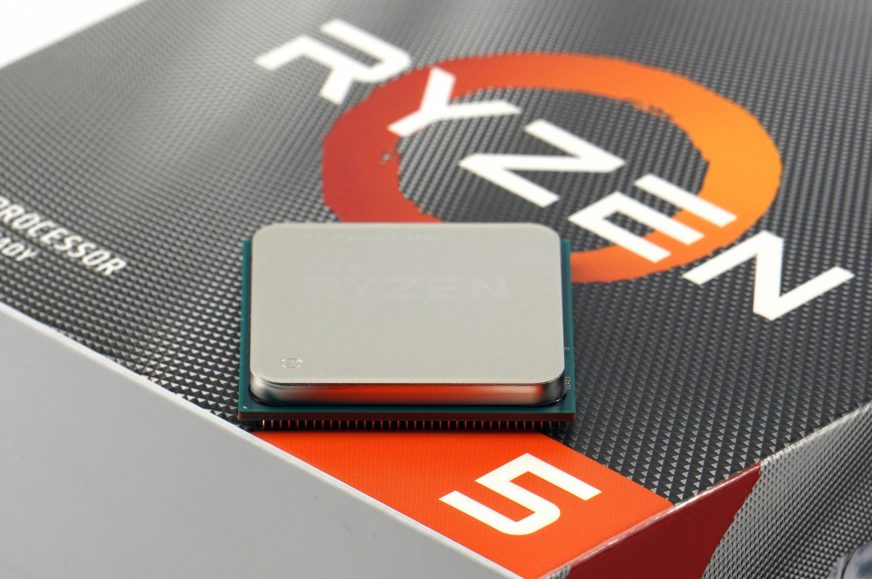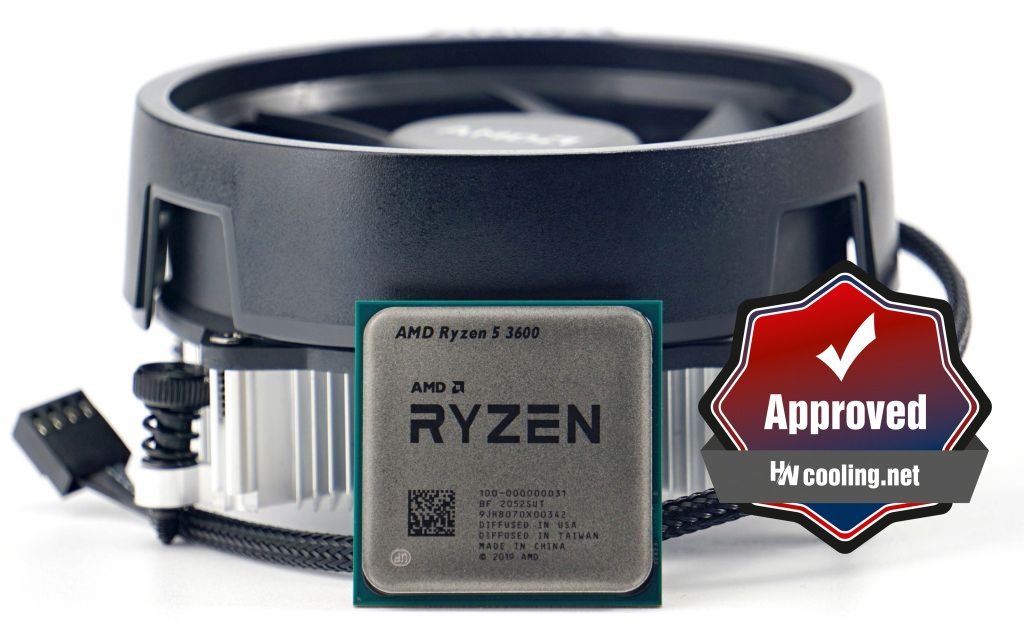Conclusion
One of the most popular CPUs in recent history. That is the Ryzen 5 3600. In stores It’s almost totally unavailable, yet it’s performance numbers are very valuable. Many of you own this processor thanks to its popularity so I presume you will appreciate a little head-to-head with more recent and more available models. From these tests, you will get an idea how the 6 Zen 2 cores stack up against Zen 3 (5600X) or Intel (be it Rocket Lake or Comet Lake).
Conclusion
Gaming performance of the R5 3600 is, as expected, lower than the R5 5600X and the Core i5-11400F and it’s even below the Core i5-10400F. In resolutions that systems with these CPUs commonly operate in it’s 5-6% slower than the i5-10400F on average . The gap to the i5 11400F is 8% in QHD and 13% in FHD and 9 to 18 % in comparison to the pricier R5 5600X.
If you’re interested in a new system, you will probably pay more attention to the comparison with the Core i5-11400F, as it is a CPU in roughly the same price range. Those who already own the R5 3600 will perhaps look at the R5 5600X more closely, because an upgrade wouldn’t require a motherboard change, as the two CPUs work on the same chipsets (B450/X470 or newer).
Core i5-11400F clearly dominates the Ryzen 5 3600. The performance gap varies from game to game. The most notable difference is in titles such as Total War Saga: Troy, Shadow of the Tomb Raider, F1 2020 a Metro Exodus. In Full HD, the R5 3600 falls 18-21% behind, in Quad HD the gap closes by a bit and the i5-11400F leads by 8-18%. The smallest difference in performance is in CS:GO, which is one of the only games where the R5 3600 comes out ahead of the i5-10400F, by 7%.
Compared to the R5 5600X, the difference in performance is even more significant than with the Core i5 Rocket Lake CPU. The smallest gap is in Assassin’s Creed: Valhalla – the R5 3600 falls 2 (QHD) to 4 % (FHD) behind. The essential problem for this CPU is the existence of the notably cheaper Core i5-10400F, which isn’t threatened even by AMD’s strongest weapon – low power consumption. The Core i5-10400F is even more power efficient, and that is while having better gaming performance . The differences between these two CPUs are minimal though, similiarly to the PC Mark 10 tests , where the leader is the red team. Let’s remind ourselves that PCM measures mostly performance during “routine” operation, which includes work with text editors, video calls and various applications’ initialization times. Here, the R5 3600 is swifter. Don’t take this verdict too seriously though. To turn the tables, all you would need is a small tweak of the i5 or the memory. Long story short, everything is marginal, apart from the price where Intel really took its gloves off. With similar pricing though (11400F), the Core i5 edges out the older Ryzen 5, albeit very slightly. Even in a web-base workload.
When comparing the R5 3600 to the i5-11400F, what’s notably equal is the 3D rendering performance, though the clear time-saver is the 10-14% more powerful R5 5600X. For video editing in DaVinci Resolve Studio , the performance results are practically equivalent, the same stands true even for some tasks in Adobe Premiere Pro, where Intel is generally faster, but the margins vary. In After Effects, the differences are more significant and the R5 3600 clearly falls behind. The R5 3600 falls 13–15 % short of the R5 5600X even in video encoding. The gap to the i5-11400F in Handbrake test is much tighter, though, only 2–7 % – 7 % in x265 encoding and 2 % in x264 encoding.
Where the i5-11400F undoubtedly loses to the Ryzen is RAWs export and preview generation in Lightroom . Otherwise, photo editing is usually Rocket Lake’s strong suite. It’s true in Photoshop, ako i in Affinity Photo, XnView, Zoner Photo Studio X či in AI apps Topaz Labs for restoration. The Ryzen 5 3600 is significntaly weaker than the R5 5600x or the i5-11400F also e výrazne slabší než R5 5600X či Ci5-11400F aj in (de)compression or (de)ciphering. However, compared to he i5-10400F, the Ryzen deals way better with gameplay recording, where the usage of the x264 encoder means notably lower performance hit.
Remarkably unusual are the Ryzens’ temperature results?. Notice that the R5 3600’s temperatures are as much as 9 °C higher than the R7 3700, though the Ryzen 7’s power consumption is always a bit higher. The cause is either a weak contact between the die and the IHS or a lower quality, not the most precise temperature sensor. One way or the other, this doesn’t look like a coincidence or bad luck with a faulty chip, as I’ve seen the same behaviour with other CPU samples in older tests. Of course, the CPU temperature impacts frequency management and that’s why it could pose a problem when using coolers with lower TDP, the reason being insufficient dimensions of low RPM.
The Ryzen 5 3600 has its best day behind it and there aren’t many reasons why you’d want to base a whole new system on the CPU. The strongest suites of this chip are low consumption and high efficiency. Regarding these features, it’s only natural to turn your head to look at the Core i5-10400F, which is very similar in performance as well, while being notably cheaper. Still cheaper and substantially more powerful is the i5-11400F, but the efficiency is nothing to write home about. Then there’s the R5 5600X that combines the best of both worlds (high performance and good efficiency) but that one is a price range or two above. AMD has clearly decided not to offer an all-round good CPU with a similar price/performance ratio that the competition has with higher power consumption and worse performance for consumption unit.
TL;DR: Don’t worry about the fact that the Ryzen 5 3600 is disappearing from store shelves. The CPU has its best time behind it and building a new system with it just doesn’t seem worth it as in most cases it falls behind the third cheaper Core i5-10400F. While gaming, in particular, the i5 has better performance while consuming less power. In other workload applications the results tend to swing from one side to the other, but due to relatively low performance, it isn’t really the ideal use case for either of them anyway. If you’ve got the money for an R5 3600 and you’re fine with a bit more power consumption, you should go for an i5-11400F. If you can’t go power-hungry, but you want the performance of at least a Rocket Lake chip, you will have to pay up for the Ryzen 5 5600X.
| AMD Ryzen 5 3600 |
| + Decent single-thread performance |
| + Constantly low power consumption |
| + Excellent efficiency, high performance per watt |
| + Notably less power-hungry than Core i5-11400F |
| + Remarkably low idle power consumption (9 W) |
| + Older AMD X370 and B350 chipset support |
| + Modern 7 nm manufacturing node |
| - Worse price to performance ratio than Core i5 (11400F and 10400F) |
| - A bit higher power consumption than Core i5-10400F (which has better performance) while gaming |
| - Higher measured temperatures |
| - No integrated graphics |
| Approximate retail price: 199 EUR |
English translation and edit by Jozef Dudáš
Games for testing are from Jama levova
Special thanks to these companies Blackmagic Design (for a DaVinci Resolve Studio license), Topaz Labs (for licenses for DeNoise AI, Gigapixel AI and Sharpen AI) and Zoner (for Photo Studio X license)
- Contents
- AMD Ryzen 5 3600 in detail
- Methodology: performance tests
- Methodology: how we measure power draw
- Methodology: temperature and clock speed tests
- Test setup
- 3DMark
- Assassin’s Creed: Valhalla
- Borderlands 3
- Counter-Strike: GO
- Cyberpunk 2077
- DOOM Eternal
- F1 2020
- Metro Exodus
- Microsoft Flight Simulator
- Shadow of the Tomb Raider
- Total War Saga: Troy
- Overall gaming performance
- Gaming performance per euro
- PCMark and Geekbench
- Web performance
- 3D rendering: Cinebench, Blender, ...
- Video 1/2: Adobe Premiere Pro
- Video 2/2: DaVinci Resolve Studio
- Graphic effects: Adobe After Effects
- Video encoding
- Audio encoding
- Broadcasting (OBS and Xsplit)
- Photos 1/2: Adobe Photoshop and Lightroom
- Photos 2/2: Affinity Photo, Topaz Labs AI apps, ZPS X, ...
- (De)compression
- (De)cryption
- Numerical computing
- Simulations
- Memory and cache tests
- Processor power draw curve
- Average processor power draw
- Performance per watt
- Achieved CPU clock speed
- CPU temperature
- Conclusion










